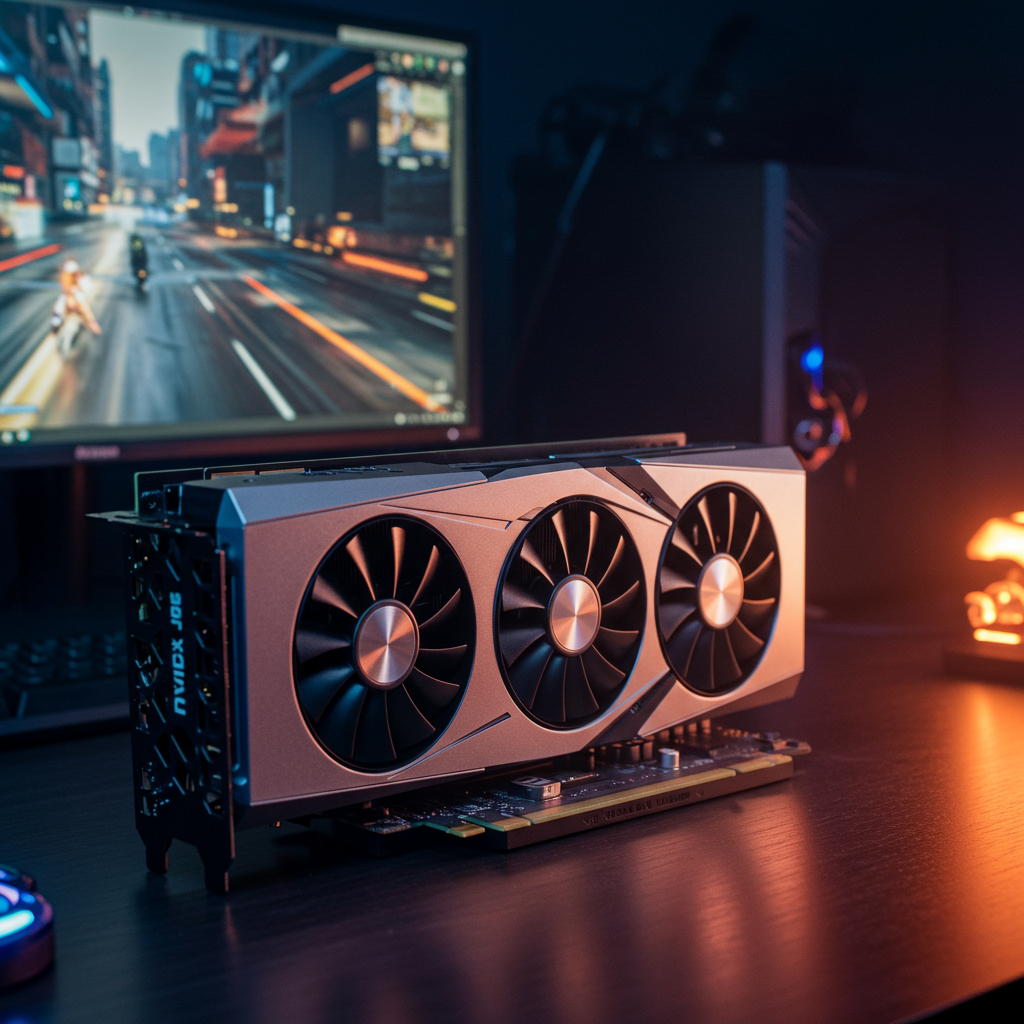NVIDIA is expanding its latest generation of graphics technology, bringing the power of the Blackwell architecture to a wider audience. The company has officially unveiled the new GeForce RTX 5050 desktop graphics card and GeForce RTX 5050 Laptop GPUs, positioning them as accessible entry points for experiencing modern PC gaming with ray tracing, DLSS 4, and AI acceleration.
These new x50-class GPUs aim to serve gamers looking to upgrade from older hardware, those new to PC gaming, students, and even builders of power-efficient systems like home theater PCs. The x50 segment is historically one of the most popular GPU classes globally, second only to the x60 series on platforms like Steam.
Blackwell Architecture for Everyone
Both the desktop and laptop variants of the RTX 5050 are built on the cutting-edge NVIDIA Blackwell architecture. This brings several key advancements to a lower price point, including:
DLSS 4 with Multi Frame Generation: This latest iteration offers significant performance boosts and enhanced image quality, particularly critical for demanding titles and enabling higher settings. Over 125 games already support DLSS Multi Frame Generation, with over 800 accelerated by RTX technologies.
4th Generation Ray Tracing Cores: Enables more immersive and realistic lighting, reflections, and shadows in supported games.
5th Generation AI Tensor Cores: Accelerate AI workloads, powering features like DLSS and other AI-enhanced applications.
9th Generation NVIDIA Encoder (NVENC) & 6th Generation NVIDIA Decoder (NVDEC): Improved hardware acceleration for video encoding and decoding, benefiting streamers, content creators, and those using modern video formats.
NVIDIA Reflex: Reduces system latency for faster reactions and improved competitiveness in esports titles, now supported in over 150 games including major competitive shooters.
GeForce RTX 5050 Desktop: Affordable Entry Point
The GeForce RTX 5050 desktop graphics card is set to arrive on store shelves starting in the second half of July, with a competitive starting price of $249. Unlike higher-end models, there will be no NVIDIA Founders Edition; instead, availability will be exclusively through NVIDIA’s add-in-board (AIB) partners. Expect models from ASUS, Colorful, Gainward, Galaxy, GIGABYTE, INNO3D, MSI, Palit, PNY, and ZOTAC, as well as integration into pre-built systems from various builders.
Key specifications for the desktop RTX 5050 include:
CUDA Cores: 2,560 Blackwell CUDA Cores
VRAM: 8GB GDDR6 memory
Memory Interface: 128-bit bus
Memory Speed: 20 Gbps GDDR6, providing 320 GB/s of bandwidth
Clock Speed: Minimum Base Clock of 2.31 GHz (up to 2.57 GHz boost clock on reference designs)
TGP: 130W
Power Connector: Requires a single 8-pin PCIe power connector
- PSU Recommendation: Suitable for systems with power supplies as low as 550 Watts
- www.nvidia.com
- www.theverge.com
- wccftech.com
- www.pcworld.com
- www.pcgamer.com
NVIDIA claims the desktop RTX 5050 is, on average, 60% faster in traditional rasterized performance compared to the RTX 3050. The performance gap widens significantly in games leveraging the full suite of DLSS 4 technologies, where it can be up to 4X faster. This leap is even more dramatic for gamers upgrading from much older cards like the GTX 1650, which lack hardware-accelerated ray tracing and DLSS support altogether.
Positioned below the $299 RTX 5060, the RTX 5050 desktop enters a market segment that includes competitors like Intel’s Arc B580 and B570 GPUs.
GeForce RTX 5050 Laptop GPUs: Efficient Mobile Gaming
For mobile gamers, the GeForce RTX 5050 Laptop GPU is already arriving in new laptops, with models starting at $999. Some laptops, like the Acer Nitro V, are expected to be available at even lower price points ($900 starting).
The RTX 5050 Laptop GPU shares the same core count as its desktop counterpart, featuring 2,560 Blackwell CUDA Cores, along with 5th Gen Tensor Cores, 4th Gen RT Cores, and the latest NVENC encoder.
A notable difference from the desktop version is the use of 8GB of faster GDDR7 video memory running at 24 Gbps. GDDR7 is highlighted for being up to 2X more energy efficient than GDDR6, allowing partners to integrate the RTX 5050 into remarkably thin (as thin as 15mm) and light (as light as 1.3kg) laptop designs with improved battery life and quieter, cooler operation.
RTX 5050 Laptop GPUs are claimed to be 2.4X faster on average in rasterized performance and consistently more than 4X faster when utilizing DLSS 4 with Multi Frame Generation compared to the previous generation RTX 3050 Laptop GPUs.
Targeting the Upgrade Market
The RTX 5050 series is particularly compelling for the millions of gamers still using older Pascal, Turing, or Ampere-based GPUs. As modern games become more graphically demanding with larger worlds and increased detail, upgrading is often necessary to maintain smooth frame rates. The RTX 5050 offers a significant generational leap, especially by enabling the use of powerful features like DLSS 4 and ray tracing on previously incompatible hardware.
Considerations and Availability
While NVIDIA’s performance claims, particularly with DLSS 4, are impressive – like achieving over 150 FPS in Cyberpunk 2077 at 1080p with DLSS 4 and Multi Frame Generation enabled (tested with a high-end CPU) – it’s worth noting that the raw performance without these technologies provides a different picture. Some analysis suggests the card’s raster performance might sit below the previous generation’s RTX 4060, with DLSS 4 being key to its comparative advantage against the RTX 3050.
With desktop cards arriving in the second half of July and laptops available now, gamers eager to experience the new hardware should keep an eye out for reviews expected soon. Waiting for independent benchmarks can provide a clearer picture of real-world performance across various games and configurations.
A new GeForce Game Ready Driver is scheduled for release in early July, providing full support for all GeForce RTX 5050 desktop and laptop GPUs. Laptops currently shipping include an initial pre-installed driver to deliver performance out of the box.
The launch of the GeForce RTX 5050 desktop and laptop GPUs makes the latest Blackwell architecture features and technologies, including DLSS 4 and ray tracing, more accessible than ever, bringing enhanced gaming experiences to a wider segment of the market.




